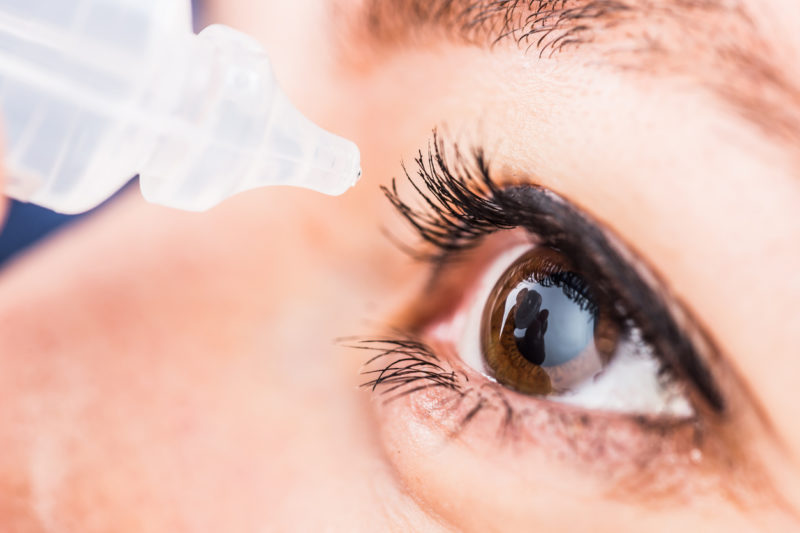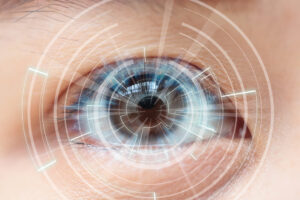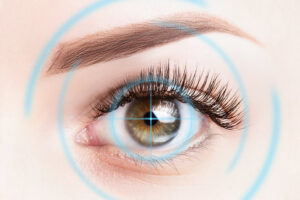
In the past, when it came to suffering from dry eyes there were few options available for patients aside from eye drops. There are several causes that can be attributed to dry eyes like allergies, aging, conditions like rheumatoid arthritis or even the improper function of eyelids and tear production. Thanks to the advancements in medical technology, there are two treatment methods available to patients that have exhausted their options for solving their chronic dry eyes. Intense Pulsed Light (IPL) and Lipiflow have both shown to be extremely successful in patients but each one is a bit different as we will explain below.
There are several causes for dry eye but one of the most common is Meibomian Gland Dysfunction (MGD). When the meibomian gland isn’t functioning properly (from blockage, inflammation or other abnormality), the oil (lipid) layer of the tear is not produced, which causes quick evaporation of the tears. This leads to constantly dry, red and irritated eyes that can be extremely uncomfortable.
IPL vs. Lipiflow

IPL, which was originally developed and used for dermatology treatment of rosacea and telangiectasia, has now proven to be very effective in MGD treatment. IPL works by focusing a strategic level of light pulses (500-800nm wavelengths) to penetrate the skin under the eye and targets the root cause of the malfunctioning Meibomian gland. IPL is an FDA-approved treatment method works by utilizing the properties of oxyhemoglobin, in the blood vessels, to absorb the emitted light, which causes an increase in temperature, coagulation of the cells and thrombosis of the blood vessels. This helps break up any blockages in the glands that may be impacting the production of healthy tears.
Benefits of IPL
- Improves eye function and comfort
- Safe and approved (FDA)
- Reduces the need for eye drops
- Treats the root cause of MGD
- Quick, outpatient procedure (typically 15 minutes)
LipiFlow
Focusing on the blockages caused by MGD, Lipiflow is the first FDA-approved treatment device that massages both the inner and outer eyelids. While gently heating the lids, the Meibomian glands are gently massaged to help clear blockages and stimulate the healthy production of the lipid layer for healthy tears.
LipiFlow activators are devices are specially designed to be placed under and over the eyelid and contoured above the cornea. This revolutionary design allows there to be no contact with the core eye surface at all. During the treatment, the activator delivers a gentle combination of heat and pressure to the inner eyelids using Vectored Thermal Pulse (VTP) with a therapeutic motion on the outer lid. This combination of heat and pressure safely removes any glad obstruction or gland content.
Benefits of LipiFlow
- First and only FDA-approved device to provide inner and outer lid therapy
- Fast results (as little as 4 weeks)
- Fast treatment- patients done in 12 minutes
- Over 25 years of research by TearScience, the LipiFlow developer
- Very little pain and/or discomfort
It is very easy to see that both treatment options provide exceptional results. Deciding which treatment is better suited for your needs is a discussion that you need to have with your eye doctor. When it comes to understanding the underlying causes, treating those specific causes with the latest medical treatments and technologies, no one does it better than Diamond Vision. Our award-winning staff, led by Dr. Steven Stetson, provides unmatched care when it comes to your vision and eye health. See for yourself by scheduling a free consultation to discuss your problems. Contact our Atlanta Dry Eyes Treatment Center to help you with your eye health.
Contact Us
If you have more questions about LASIK procedures, get in touch with us.
Related Blogs

Timing is Everything: When to Consider LASIK After Nursing for Optimal Results
Timing is everything when considering LASIK eye surgery after nursing, and understanding the optimal period for this procedure is vital for both mother and baby.

Cataract Surgery: Restoring Clarity and Confidence
Cataract surgery is a transformative procedure that offers a new lease on clear vision and renewed confidence. As cataracts cloud the eye’s lens, causing blurred

Intralase LASIK Explained: What to Expect Before, During, and After the Procedure
Intralase LASIK is a cutting-edge procedure that offers a safe, effective, and precise way to enhance vision compared to traditional LASIK methods. Understanding what to
